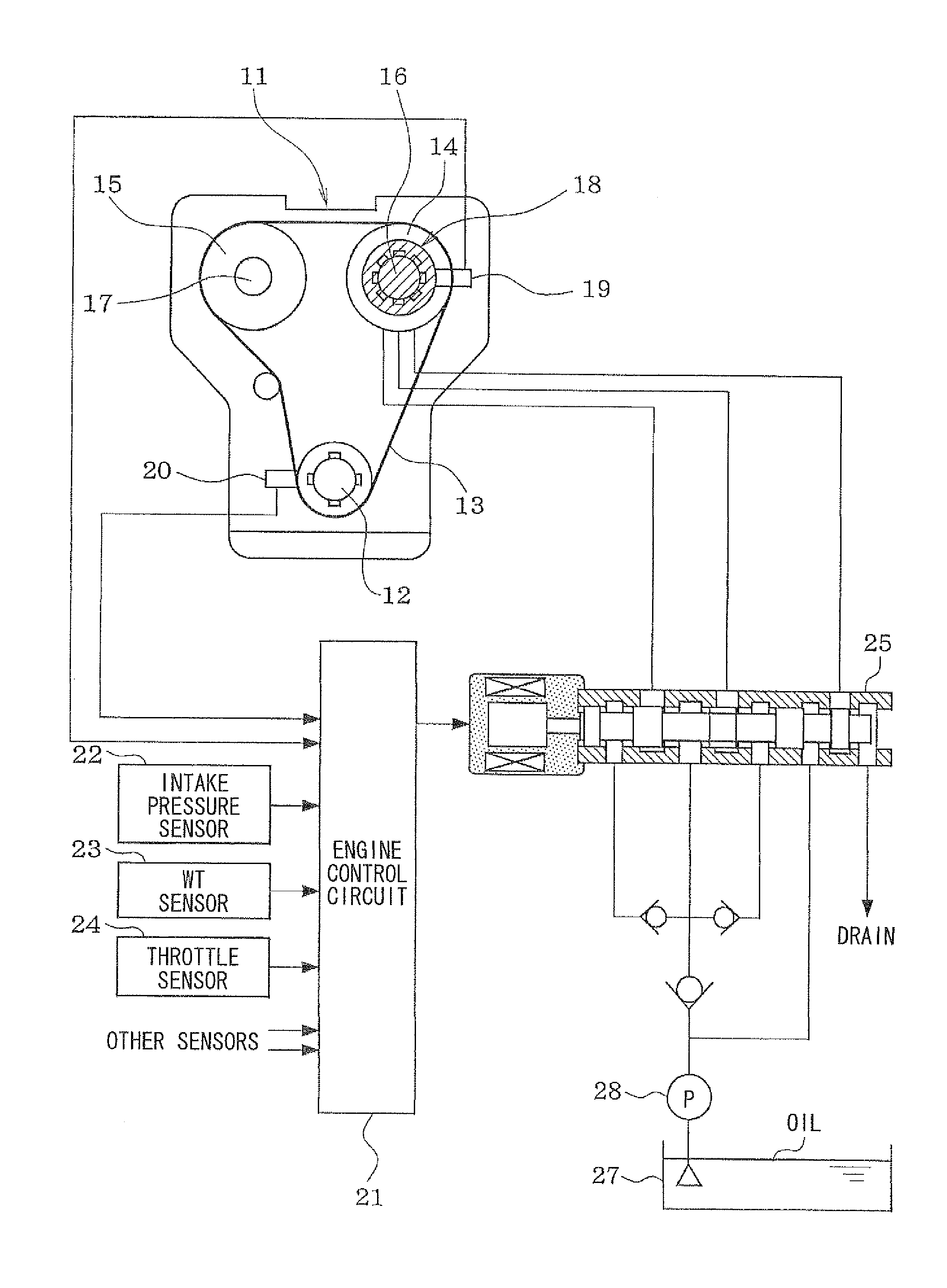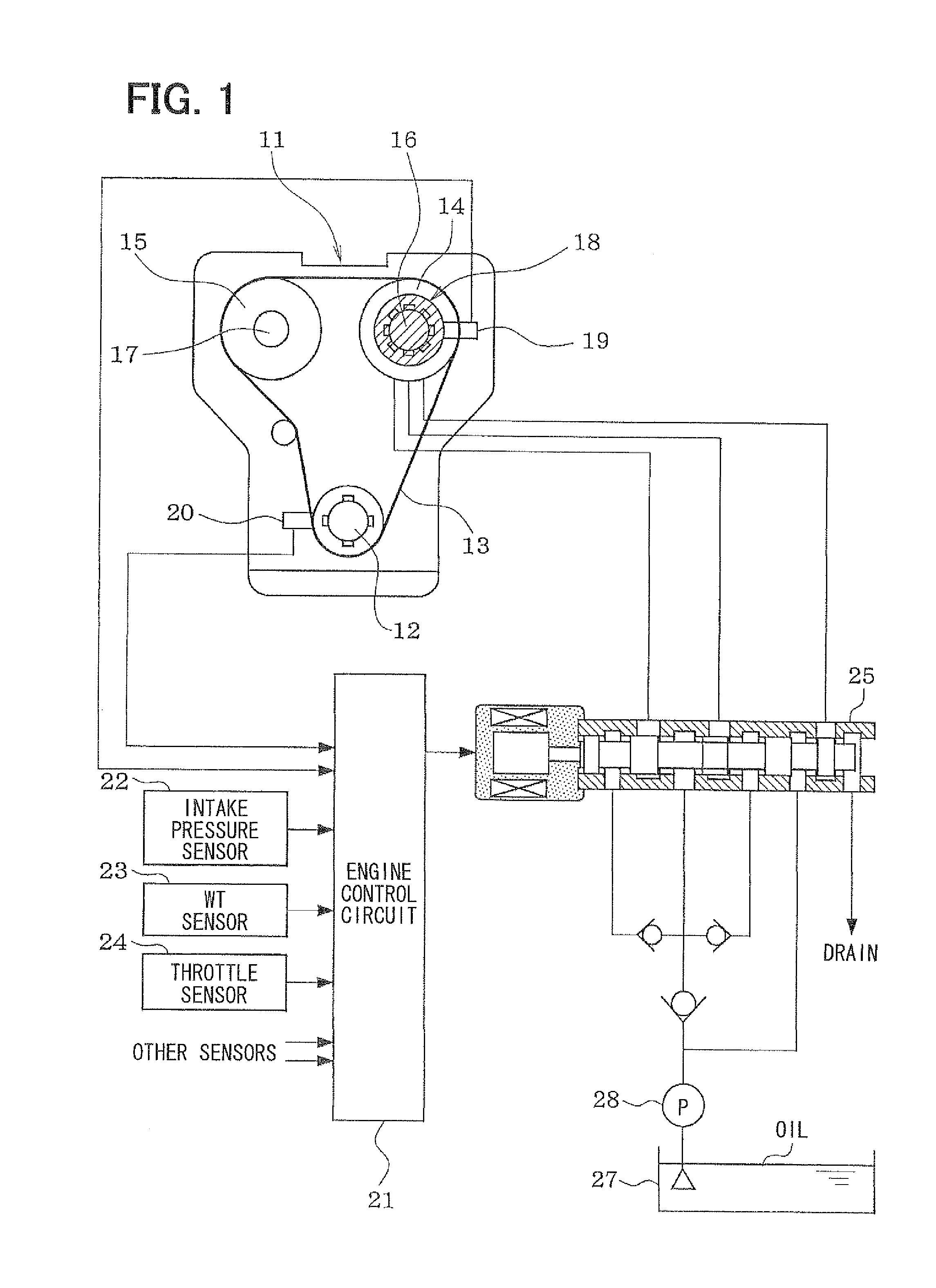Variable valve timing control apparatus
a timing control and valve technology, applied in mechanical equipment, machines/engines, output power, etc., can solve the problems of strange sound, inability to perform feedback control, and worse start-up properties of engines
- Summary
- Abstract
- Description
- Claims
- Application Information
AI Technical Summary
Benefits of technology
Problems solved by technology
Method used
Image
Examples
first embodiment
[0039](First Embodiment)
[0040]A first embodiment will be described with reference to FIGS. 1-7. As shown in FIG. 1, power is transmitted from a crankshaft 12 to an intake-side camshaft 16 and an exhaust-side camshaft 17 through respective sprocket 14, 15 by a timing chain 13, in an engine 11. The intake-side camshaft 16 has a variable valve timing device 18 to control an advance amount of the intake-side camshaft 16 with respect to the crankshaft 12, which is referred as variable cam timing (VCT) phase.
[0041]A cam sensor 19 is arranged on an outer circumference side of the intake-side camshaft 16, and outputs a pulse of cam angle signal by every predetermined cam angle. A crank sensor 20 is arranged on an outer circumference side of the crankshaft 12, and outputs a pulse of crank angle signal by every predetermined crank angle. Signals output from the sensors 19, 20 are input into an engine control circuit 21.
[0042]The engine control circuit 21 calculates an actual valve timing (act...
second embodiment
[0097](Second Embodiment)
[0098]A second embodiment will be described with reference to FIGS. 8 and 9. Substantially the same parts as the first embodiment are omitted or simplified, and parts different from the first embodiment will be described.
[0099]A routine of FIG. 8 and a routine of FIG. 9 are performed by the engine control circuit 21, so as to predict a generation of engine stall. Further, if the engine stall is predicted to occur, the control duty of the OCV 25 is set to have the lock holding mode L2 regardless of a position of the VCT phase. Thus, the lock pin 58 and the retard restricting pin 64 are driven to the lock direction so as to lock the VCT phase.
[0100](Lock Control for Engine Stall)
[0101]The routine of FIG. 8 is repeatedly performed with a predetermined cycle while the circuit 21 is active, and may correspond to a valve controller for engine stall. If the routine is started, a routine of predicting the engine stall (FIG. 9) to be mentioned later will be first per...
PUM
 Login to View More
Login to View More Abstract
Description
Claims
Application Information
 Login to View More
Login to View More - R&D
- Intellectual Property
- Life Sciences
- Materials
- Tech Scout
- Unparalleled Data Quality
- Higher Quality Content
- 60% Fewer Hallucinations
Browse by: Latest US Patents, China's latest patents, Technical Efficacy Thesaurus, Application Domain, Technology Topic, Popular Technical Reports.
© 2025 PatSnap. All rights reserved.Legal|Privacy policy|Modern Slavery Act Transparency Statement|Sitemap|About US| Contact US: help@patsnap.com



